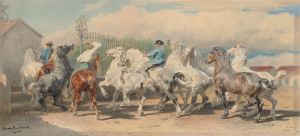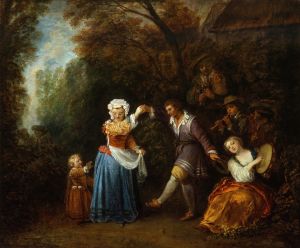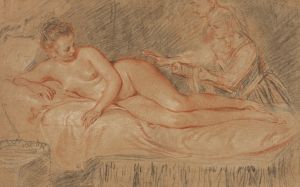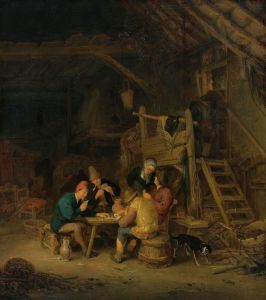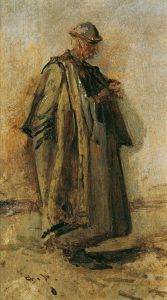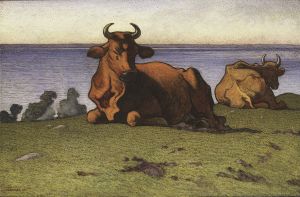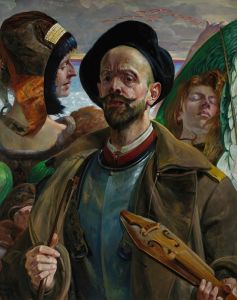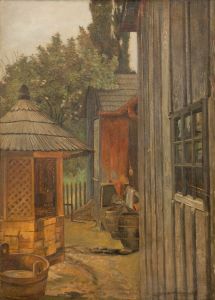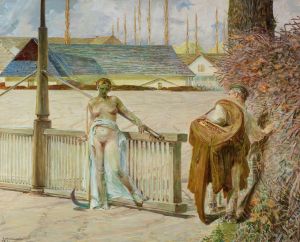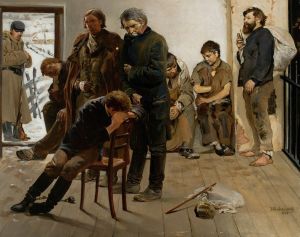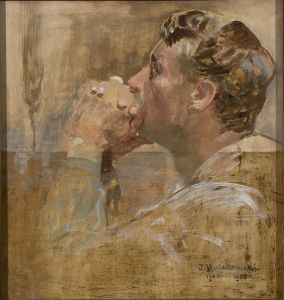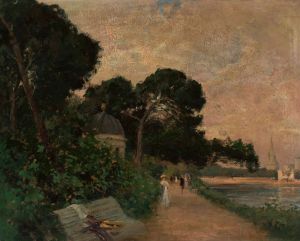
At the shadoof
A hand-painted replica of Jacek Malczewski’s masterpiece At the shadoof, meticulously crafted by professional artists to capture the true essence of the original. Each piece is created with museum-quality canvas and rare mineral pigments, carefully painted by experienced artists with delicate brushstrokes and rich, layered colors to perfectly recreate the texture of the original artwork. Unlike machine-printed reproductions, this hand-painted version brings the painting to life, infused with the artist’s emotions and skill in every stroke. Whether for personal collection or home decoration, it instantly elevates the artistic atmosphere of any space.
Jacek Malczewski was a prominent Polish painter associated with the Symbolist movement, known for his unique style that often incorporated elements of Polish folklore, history, and mythology. One of his notable works is "At the Shadoof" (Polish: "Przy żurawiu"), which reflects his characteristic blend of realism and symbolism.
"At the Shadoof" is a painting that captures a scene involving a shadoof, a traditional hand-operated device used for lifting water, typically seen in rural areas. This device is often associated with agricultural practices and is a common sight in various cultures, including Poland. Malczewski's depiction of the shadoof serves as a symbol of the connection between humanity and nature, a recurring theme in his work.
The painting is characterized by its detailed portrayal of the rural landscape, emphasizing the harmony and simplicity of country life. Malczewski's use of color and light in the painting highlights the natural beauty of the scene, while also imbuing it with a sense of nostalgia and reverence for traditional ways of life. The figures in the painting, often depicted in traditional Polish attire, further emphasize the cultural and historical context of the work.
Malczewski's art often explored themes of Polish identity and national consciousness, especially during a time when Poland was partitioned and lacked political independence. His works frequently included allegorical and symbolic elements that conveyed deeper meanings related to the struggles and aspirations of the Polish people. In "At the Shadoof," the shadoof itself can be interpreted as a symbol of resilience and the enduring spirit of the Polish countryside.
The painting also reflects Malczewski's interest in the human condition and the relationship between people and their environment. By focusing on a simple, everyday activity like drawing water, Malczewski elevates the mundane to the level of art, inviting viewers to contemplate the deeper significance of ordinary life.
Jacek Malczewski's contribution to Polish art is significant, as he is considered one of the leading figures of the Young Poland movement, which sought to rejuvenate Polish art and culture at the turn of the 20th century. His works, including "At the Shadoof," continue to be celebrated for their artistic merit and their ability to capture the essence of Polish identity and heritage.
Overall, "At the Shadoof" exemplifies Malczewski's skill in blending realism with symbolism, creating a work that is both visually striking and rich in meaning. The painting remains an important part of Malczewski's oeuvre and a testament to his ability to convey complex themes through the medium of art.





